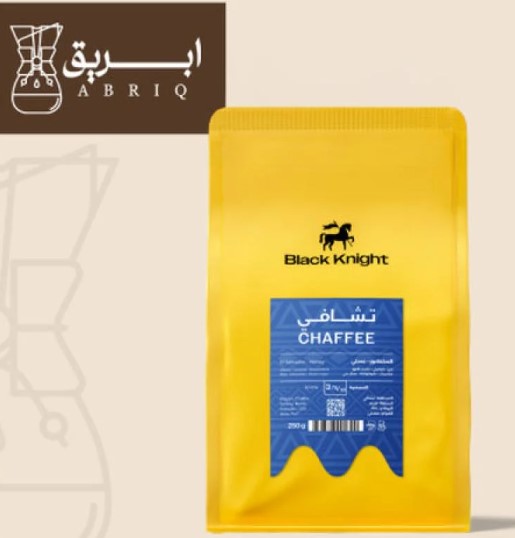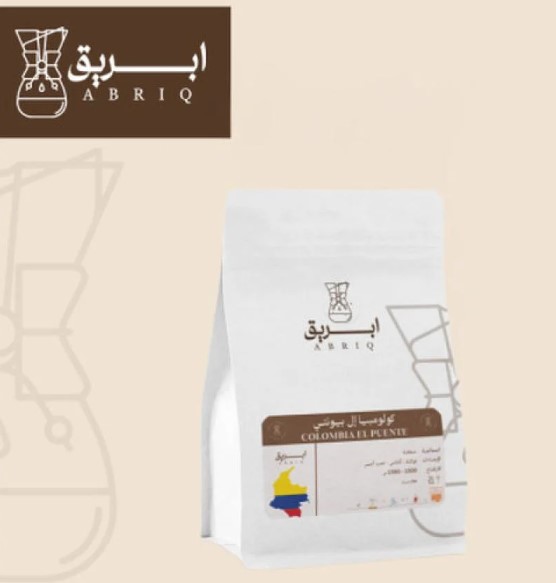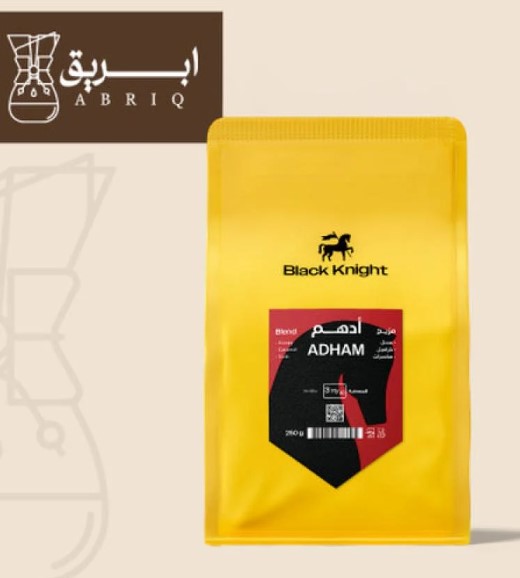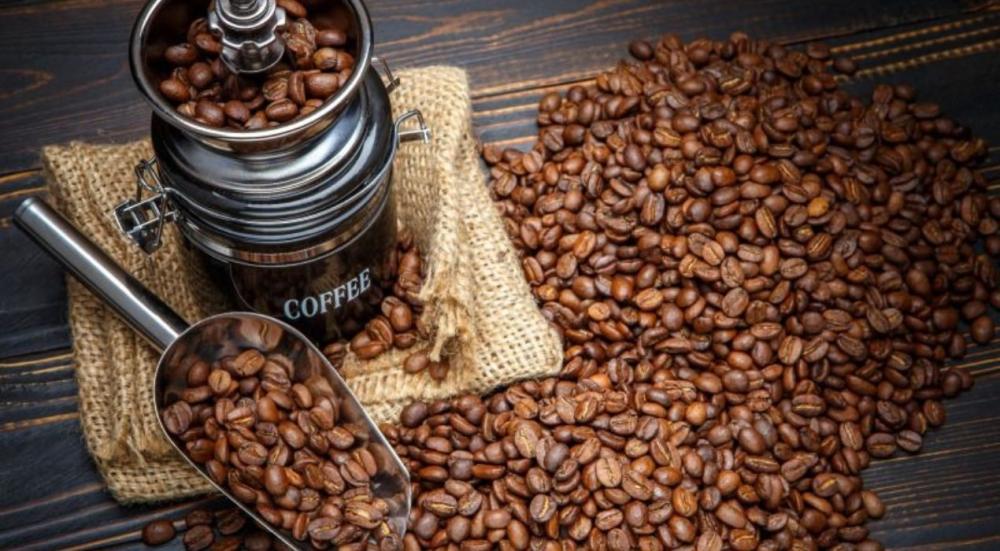The secrets of coffee roasting lie in the delicate balance between science and art, transforming green beans into a rich blend of flavors and aromas that captivate the senses. Every second and every temperature makes a difference in the final taste, making the roasting process a creative journey that reveals coffee's true essence and special charm.
From the heart of this passion, Ebriq stands out as the finest destination in Saudi Arabia for lovers of specialty coffee and its preparation tools. Ebriq combines high quality with luxurious variety, providing every coffee lover with a complete, professional experience that combines taste, performance, and elegance in every detail.
What are the secrets of roasting coffee?
Choose grains carefully
Start your journey at the source. Each coffee bean tells a different story in terms of origin, altitude, and processing method. Washed beans give you a clean, balanced flavor, while natural beans offer a richer taste and a distinct fruity sweetness. Choose beans that match your preferred roast style, whether light, medium, or dark.
Choosing the right equipment
The results vary depending on the type of roaster used. Air-cooled roasters give you more precise temperature control, while drum roasters deliver more consistent roasting and flavor intensity. Choose the machine that best suits your production volume and experience level for optimal performance and consistent results.
Controlling coffee roasting time
Each type of bean has its own ideal timing to achieve perfect balance in flavor. African beans, for example, react quickly and require a shorter roasting time, while Latin American beans may benefit from a slightly longer roasting. Monitor the sounds and emissions during roasting to determine the ideal moment to stop.
Precise temperature control
Temperature is key in the roasting process, as it determines the final flavor profile of the beans. Roasting too high a temperature can burn the surface without ripening the inside, while roasting too low can strip the coffee of its vibrancy. Use an accurate thermometer and track changes in real-time to achieve the perfect balance.
Stir regularly during roasting.
Constant stirring is essential for even heat distribution throughout the beans, preventing them from burning or remaining raw. You can use roasters with a rotating mechanism or carefully stir by hand. Roasting consistency ensures a consistent, consistent flavor in every sip.
Avoid over-roasting.
Overroasting can obscure the coffee's identity and transform the flavor into a bitter or burnt character. Maintain a delicate balance that highlights caramel or chocolate notes without losing the natural depth of the beans. Remember, good coffee doesn't need to be dark to be rich.
Color and odor monitoring
The color of the beans changes from green to golden or dark brown, reflecting the stages of flavor development within. Also, feel the rising aromas, as they clearly tell you the perfect roasting degree. These five senses work together to guide you toward the moment when the coffee reaches its aromatic peak.
Rapid cooling after roasting
Once the desired roasting degree is reached, the process must be stopped immediately by rapidly cooling the beans. This step preserves the aromatic oils and prevents further internal maturation. Use air dryers or a metal surface to cool the beans in seconds, ensuring a pure, balanced flavor.
Proper storage to preserve flavor
After roasting, the beans need to rest and be properly stored to release gases without losing flavor. Use opaque containers with a one-way valve and store them in a dry place away from light and heat. The optimal storage environment will ensure the coffee's longevity and quality.
Gradual roasting for concentrated flavors
When working with high-quality beans, adopt a slow, gradual roasting approach, which gives you the opportunity to extract the deep layers of flavor. This technique creates a harmony of acidity, sweetness, and bitterness in a sophisticated and balanced manner. It's the hallmark of a professional who understands coffee as if it were a work of art sculpted by fire.
Best coffee crops from a pot
Xavi - El Salvador | Black Knight

Chavi - El Salvador | Black Knight offers a unique experience for coffee lovers. The beans are honey-processed, resulting in a rich, balanced flavor that reflects the unique quality of the coffee. The creamy texture blends with hints of chocolate and caramel for a smooth, rich taste experience.
The coffee's rich flavors are complemented by a variety of notes of almond milk, nuts, and brown sugar, making it ideal for both hot and cold brew. This coffee is ideal for lovers of classic, heavy, and lightly fruity coffees, making every cup a delightful journey into a world of exceptional flavors.
Colombia El Puente jug

The Colombian El Puente coffee pot offers a unique taste journey with natural tropical flavors blended with a distinctive red grape note that reflects the coffee's authenticity. High-altitude cultivation of the beans ensures exceptional quality and a perfect balance between acidity and sweetness.
The coffee experience is completed with natural processing that preserves the authentic flavor of each bean, making it ideal for specialty coffee lovers seeking a rich and distinctive experience in every cup. Each sip takes you to the heart of Colombian coffee's authenticity and its dazzling flavors.
Adham Mix - Ethiopia Black Knight

Adham Blend - Ethiopia | Black Knight delivers a balanced, deep coffee experience thanks to a dry processing process that highlights the authenticity of each bean. The full body highlights the natural sweetness with rich honey notes, giving each cup a distinct and unique character.
The coffee flavors shine with a balance of honey, caramel, and cashew, making it suitable for all preparation methods, whether filter, espresso, or milk drinks. This everyday blend is an ideal choice for anyone looking for a well-rounded and diverse flavor to suit all tastes.
The most important health benefits of roasted coffee
- Stimulating focus and mental activity: Thanks to its caffeine content, coffee enhances focus and alertness, improving mental performance in daily and precise tasks.
- Boosting digestive health: Coffee stimulates the secretion of digestive juices and bile, which aids in the digestion of fats and reduces the likelihood of gallstones.
- Reducing chronic diseases: Studies have shown that regular coffee consumption may help reduce the risk of type 2 diabetes, heart disease, and some types of cancer, thanks to its role in improving insulin sensitivity and regulating cholesterol.
- Supports brain health: Researchers link coffee consumption to a reduced risk of Parkinson's and Alzheimer's diseases, due to its protective effect on neurons.
Coffee roasting steps
- Start by preheating your coffee roaster to the appropriate temperature, depending on the type of machine and your preferred roast level.
- Use a moderate amount of green coffee beans – it's best to start with about half a cup – so you can control the final result.
- Stir the beans constantly to ensure even heat distribution and prevent any part of them from burning.
- Track the development of the aroma; when it turns from grassy to a roasted coffee aroma, the beans have entered the basic stage of roasting.
- Stop roasting at the degree that suits your taste, whether light or dark.
- Immediately transfer the beans to a vented container to cool completely before grinding, to preserve their unique flavor and aroma.
Coffee roasting temperatures
- Light roasting: At a temperature of 180-205°C, it highlights fruity flavors and pronounced acidity with a touch of smoothness.
- Medium roast: This roast ranges between 210 and 220°C and is considered the perfect balance between flavor and bitterness, making it the most popular choice.
- Medium-dark roast: The beans are roasted at temperatures of 225 to 230°C, giving the coffee greater depth with a caramel-like flavor.
- Dark roasting: This takes place at a temperature between 240 and 250°C, producing a strong coffee with a smoky character and a bitter note that will satisfy lovers of bold tastes.
Factors affecting coffee flavor during roasting
- Roasting time: Time is crucial; long roasts deepen the flavor, while short roasts preserve the freshness of the beans.
- Temperature: Each heat level creates a different character, with high heat giving off dark, chocolatey flavors, and low heat bringing out acidity and fruity notes.
- Bean Type: Each type of coffee has different characteristics. Arabica beans offer a smooth, complex flavor, while Robusta beans are characterized by greater strength and bitterness.
The most prominent methods and techniques for roasting coffee
cylindrical roasting
This traditional technique rotates the beans within a heated metal drum to ensure continuous contact with the heat. This allows for greater control over the roasting process and highlights rich flavors, making it the preferred choice for specialty roasters seeking perfection.
hot air roasting
This method is one of the most precise and modern, as hot air is rapidly blown around the beans to distribute heat evenly. The result is a quick and clean roast that gives the coffee a pure, balanced flavor, highlighting the subtle details of the beans' natural texture.
Gas Roasting vs. Electric Roasting
Gas roasting provides consistent heat and natural distribution that brings out the aromatic depth of the beans, while electric roasting offers precise temperature control and easy reproducibility. Both offer a distinct experience, but the ideal choice depends on your ultimate goal—a rich, traditional flavor or a carefully considered, scientific balance.
The best types of coffee beans suitable for home roasting
- Robusta: Characterized by its strength, density, and high caffeine content, it is an ideal choice for those who enjoy a bold character and a deep, bitter taste. It also adds a rich touch to espresso blends when combined with Arabica.
- Arabica: The preferred choice for gourmet coffee lovers, it boasts a smooth taste, balanced acidity, and floral and fruity notes. It's ideal for beginners in home roasting thanks to its flexibility and ease of developing aromatic layers.
- Colombian Coffee: One of the most distinctive varieties, with its balanced flavor and smooth chocolate notes, along with a natural sweetness that satisfies the tastes of rich coffee lovers. It is ideal for those seeking a well-rounded taste that combines smoothness and depth.
Methods of preparing coffee from roasted coffee
- Modern automatic machines: With the touch of a button, you can get the perfect cup of coffee shop-quality coffee. These machines feature precise control over grind, water quantity, and temperature, making them the perfect choice for those seeking convenience without compromising on premium taste.
- Espresso: A symbol of strength and concentration in the coffee world, it's prepared by forcing hot water through very finely ground coffee, producing a dense drink that balances bitterness and sweetness. This method reveals the subtlest roasting details and provides the perfect foundation for specialty drinks.
- French Press: This classic method involves steeping coarsely ground coffee in hot water for a specific period of time, allowing the natural oils and intense flavors to be extracted. The result is a rich, warm, and intense cup, perfect for those who appreciate depth and intense flavor.
Top Tips for Roasting Coffee Perfectly
- Experiment with different roast levels: Feel free to experiment with different roast levels—light, medium, and dark—to discover the character that best suits your taste. Each degree has its own depth and unique touch in bringing out the flavors of the beans.
- Monitor the time accurately: Use a dedicated timer to track each stage of the roasting process. Even a few seconds can make a big difference in flavor. Timing control is key to consistency and consistency between batches.
- Start with small batches: Roasting limited quantities gives you greater control over temperature and distribution, and reduces the risk of burning the beans. It's the perfect way to experiment with the finer details before moving on to larger batches.
Frequently Asked Questions
How to roast green coffee at home?
Use an electric roaster or a skillet over a flame, adjusting the coffee roasting degree and caffeine content.
Adding time to achieve the perfect flavor to your taste.
How can roasted coffee be preserved without losing its flavor?
It is recommended to store it in an airtight container away from light, moisture and heat to preserve its aromatic oils and rich flavor.
How does roasting affect the final flavor of coffee?
The longer the roasting time, the richer the caramel flavors, while a lighter roast preserves the acidity and fresh floral flavors.
What is the difference between light and dark roast in flavor?
Light roasting highlights fruity flavors and subtle acidity, while dark roasting creates a strong, smoky flavor and a heavier body. V60 coffee roasts vary to suit brewing methods that emphasize smoothness and balance.
What is the ideal degree to roast Arabic coffee?
A light or medium roast is best, as it preserves the authentic taste of the beans and brings out the subtle Arabic flavors in perfect balance.
Does roasting affect the quality of the final coffee?
Yes, proper roasting brings out the natural flavors and creates a unique balance, while over-roasting strips the coffee of its original flavor and makes it bitter.
What is the difference between green and roasted beans?
Green beans contain high moisture and lack a distinct flavor, while roasting releases aromatic oils that give coffee its distinctive taste.
How long does it usually take to roast coffee?
The process takes approximately eight to twenty minutes, depending on the type of beans and the desired degree of roasting.
What are the signs of perfect roasting?
Uniform brown color, pleasant aroma, and a slight sheen to the oils without burning the grains or developing an excessive bitter taste.
Does the preparation method differ depending on the degree of roasting?
Certainly, light roast is suitable for drip and filter coffee, while dark roast is ideal for espresso and Turkish coffee.
Does the caffeine content change depending on the degree of roasting?
Yes, light coffee contains slightly more caffeine, but the difference is slight when measured by volume rather than weight.
Is dark coffee always stronger in taste?
Not always, the strength of the flavor does not mean increased caffeine, but rather reflects the concentration of roasted and caramel flavors.
What are the degrees of coffee grinding in numbers?
Starting at 13-15 for a coarse grind used in French press and cold brew, followed by 8-12 for a medium grind for drip coffee, then 5-7 for a fine grind for espresso, and finally 1-2 for an extra-fine grind for Turkish coffee. The ideal level is determined by experimentation, depending on the type of grinder.
Ultimately, the secrets of coffee roasting remain the essence of uniqueness and the secret to an unforgettable flavor. It's the art that makes the difference between an ordinary cup and an exceptional, sensory experience. If you're looking for your gateway to the world of professional coffee, Ibrik is the ideal choice for anyone seeking quality and professionalism in the world of specialty coffee.


